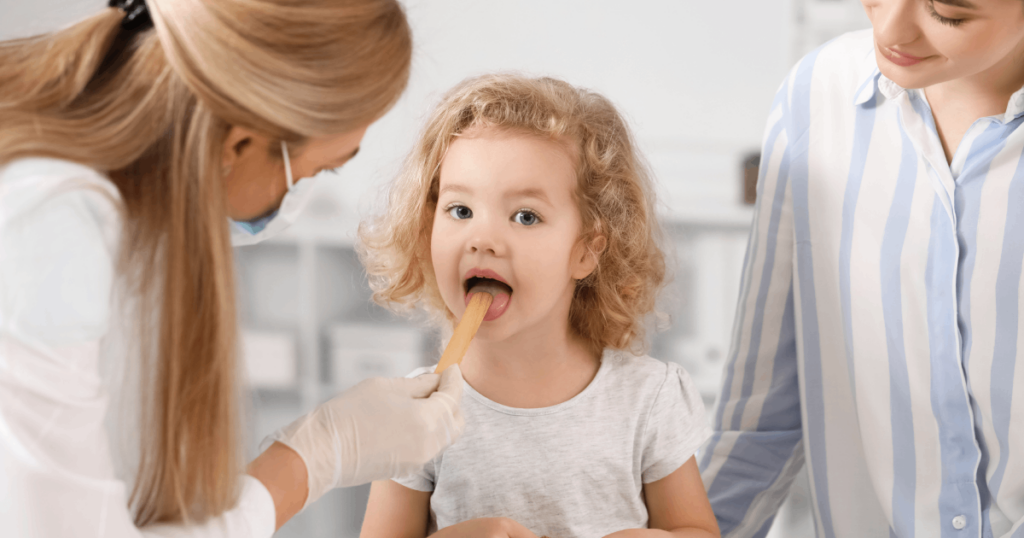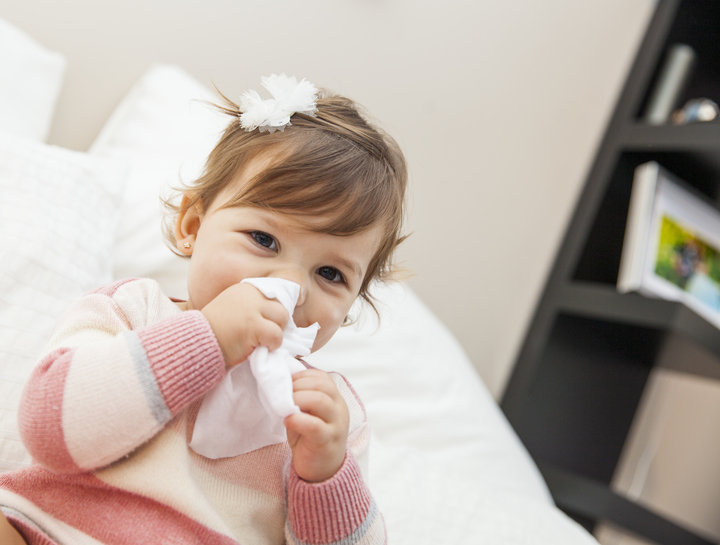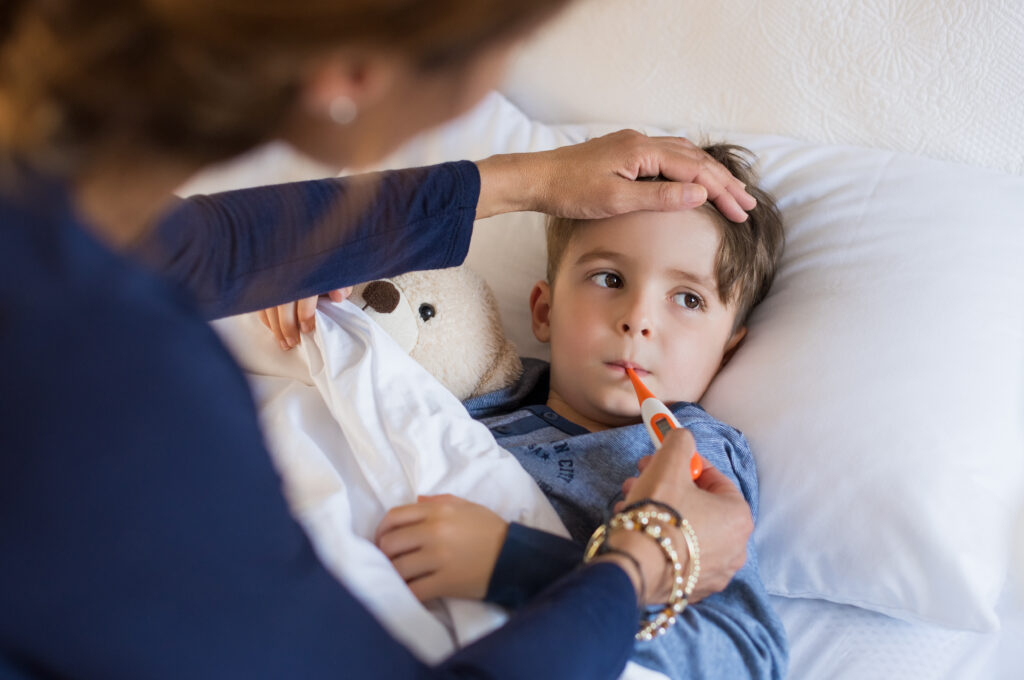
When you have kids you’ll know that fevers are a common part of life. We’re all surrounded by bugs and germs in our everyday lives and fevers are just one way our bodies try to fight off an illness or infection.
All kids will get a fever from time-to-time – but as they grow older and are exposed to more germs, their immune systems become more developed and they’re likely to have fewer infections and fevers:
- Children under 2 years may have as many as 8-10 colds a year
- Children under 6 years may have 6-8 colds a year
- Adults tend to only have 2-3 colds a year
Kid’s Fever Temperature
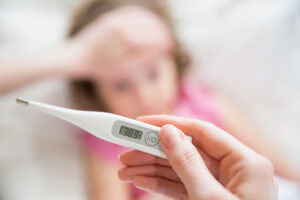
Usually a healthy child has a body temperature of around 36.4°C to 38°C – once it starts to rise above 38°C it’s considered a high or fever temperature. But how do you know if your child has a fever?
There may be some signs you can pick up on, such as your child’s skin feels hot or their face starts to look red or flushed – but you will need to check your child’s temperature with a thermometer to really know if they have a fever.
There are many different types of thermometers – each measures the temperature in a different way – with some being more accurate than others. The best type of thermometers to use will also depend on the age of your child.
Commonly available types of thermometer include:

- Digital probe thermometers (that can measure the temperature either under the tongue or armpit)

- Digital ear thermometers

- Infrared forehead thermometers.
To find out more about thermometers and measuring you child’s temperature, visit How to take your baby’s temperature.
Fever Symptoms in Kids
A fever usually means your child is fighting an illness or infection. Some children appear and behave normally despite having a high temperature, while others may feel uncomfortable and have symptoms such as:
- Feeling hot or looking flushed
- Have a headache
- Sweating or shivering
- Maybe more irritable or more sleepy than usual
- May not want to eat or drink
- Have faster breathing or an increased heart rate.
Ways to Reduce Fever in Kids

Some ways which may help when you are caring for a child with a fever at home:
- If the fever is making your child uncomfortable or miserable – or if they have other painful symptoms of colds and flu such as a sore throat – then you can try a simple (age-appropriate) pain-reliving medication such as Dymadon for Kids to help reduce the fever. Always remember to follow the instructions about how often and how much to give your child.
- Dress them in lightweight clothing and keep their room at a comfortable temperature.
- Make sure they get plenty of rest – which may mean staying home from school or childcare until their temperature is back to normal.
- Remember to offer them plenty of cool, clear fluids to drink to help them stay hydrated.
When to Seek Help
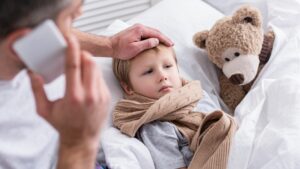
A fever itself rarely causes harm, because a fever is one of the ways our body fights infection. If your child seems happy and well there is no need to treat a fever itself.
But, with fever in children it’s important to know when to worry – you should always monitor your child for any change in their condition and take them to a doctor if:
- The fever lasts for more than 2 days and there’s no obvious cause
- You observe your child is getting worse
- Your child has a fit (febrile seizure)
You should also see a doctor or other healthcare professional if they have any of the following:
- A rash
- A stiff neck or light is hurting their eyes
- Vomiting and refusing to drink
- They are more sleepy than usual
- Have problems with their breathing
- Have pain that doesn’t get better with pain-relieving medication.
If your child is very young (under 3 months old) and has a temperature above 38°C, then you should see your doctor immediately, even if they have no other symptoms.
ALWAYS READ THE LABEL. FOLLOW THE DIRECTIONS FOR USE. INCORRECT USE COULD BE HARMFUL. IF SYMPTOMS PERSIST, TALK TO YOUR HEALTH PROFESSIONAL.

